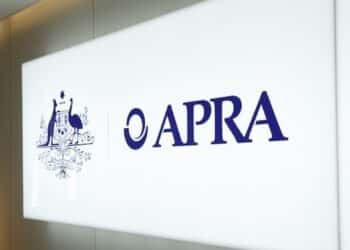Big budget, mass market, reality-based and strategic: these campaigns are being conducted by the FPA and the Association of Financial Advisers (AFA).
They are well-researched and ably-resourced – just what the doctor ordered for an industry caught in a bitter cycle of lacklustre investment returns, continuing questions over conflicts and a hammering by the mainstream media.
Their key message takes a new focus, putting the spotlight on the realities of the advice experience rather than dreamy images of idyllic holidays and beautiful people lying on yachts. One of the campaigns will also work to elevate industry members to a position of respect.
This new strategy represents a complete departure from the industry’s previous attempts to try and convince consumers of the value of advice.
“That ain’t working,” the FPA’s recently appointed head of marketing, Lindy Jones, says.
“We need to do something different. We can’t just do the same thing.”
On this point, the AFA agrees. Tight-lipped over the potentially surprising delivery method it has chosen for its advertisements, the association is optimistic the two advertising campaigns will together work well to deliver a really powerful message.
“There is a lot of collaboration already. We are all interested in the same issue. We want to grow advice,” AFA chief executive Richard Klipin says.
Two campaigns, one aim
The FPA’s advertising campaign will extend over five years and cost about $15 million. It will include highly visible media such as television and newspapers as well as online delivery. Its initial five-week advertising campaign began
in September.
The FPA campaign will also work at a local level. An Internet campaign headquarters has been set up so practitioners can download email signatures and embed the television advertisements into their own website.
Other work is also being done to elevate the FPA membership in the minds of the public. Highly visible indicators of its membership, such as code of ethics certificates, will also be sent to members.
While the FPA tackles the issue of raising the profile of its members and the individual behind the advice, the AFA campaign (to be launched at its national conference in October) will seek to tackle the reality of advice.
“We need to start to speak to consumers in their language and set it in their reality. Communications, particularly from the big end of town, is not in terms people get. It’s not real in their world or it is so general it’s not overly useful,” Klipin says.
“There is a communication gap.”
The AFA’s advertising campaign is the strategic response to its Make a Plan campaign launched at its conference last year. The Make a Plan campaign is all about bridging the communication gap and encourages members to do better.
Members dig deep to fund campaigns
In April, the FPA held an extraordinary general meeting at which Jones says “the membership was fantastic with the funding”.
Members were asked to contribute an advertising levy of between $100 and $200, depending on the membership type.
The $2 million already raised from this levy is currently being used in a five-week advertising campaign, with over half (65 per cent) the budget spent on national and regional television advertisements.
The remaining 35 per cent of the budget is to be spent on print advertising (15 per cent) as well as search engine optimisation (15 per cent), which will work to improve the visibility of the FPA website. Five per cent is to be spent on online websites.
As yet, the plan for further bursts of activity by the FPA has not been developed. It says this will be driven based on the feedback it receives from members and consumers on the current campaign.
Further, depending on the success of the first campaign, decisions will then be made as to what funding is requested from members going forward.
Meanwhile, the AFA’s advertising campaign is also funded by its members.
Why now is the right time
The financial planning industry is certainly in recovery phase, and all interested parties from the regulator to the associations down to the advice businesses themselves would like financial planners to emerge from this period with stronger and more convincing reasons why more Australians should get financial advice.
From the corporate regulator’s point of view, reform has been its best arsenal to strengthen the financial planning industry.
“ASIC is working closely with industry on helping it implement the federal government’s FOFA (Future of Financial Advice) reforms, which address concerns about the quality of financial advice given to retail clients, and focuses on areas including the restoration of confidence and trust in financial advice,” an ASIC spokesperson says.
But reform alone cannot achieve the perception change this industry is hoping for. And there is now recognition that merely focusing on it and channelling all of the industry’s energies to prepare for it, is indeed misguided.
“FOFA is going to come and go like FSR (Financial Services Reform Act),” Klipin says.
“The real issue is advice and to be honest we should have been thinking about this for the last number of years. We need to not be distracted by tactical issues.”
Certainly over the past five years and beyond, the advice industry has not had a public image. Not one anyway that has been highly beneficial to the industry.
While in many ways the post-global financial crisis environment has presented a huge marketing opportunity for the financial planning industry, it has come at a time when the industry has been heavily scrutinised for any involvement it had in investors losing money.
Both the FPA and AFA say given this background, the time is right to launch their significant advertising campaigns.
“As an industry it is almost three years to the date since the Lehman Brothers collapse. Things have never been the same again for financial planners,” Jones says.
For the AFA, the timing of the launch of its advertising campaign represents a coming of age and the recognition that it needs to address the perceived communication gap with consumers. Trust and confidence need to be restored in the minds of Australians.
And certainly ASIC is supportive of measures to promote trusted advice.
“We welcome moves by industry designed to ensure high standards and improve the quality of advice,” a spokesperson says.
However, it highlights that its role is not to promote advice, but rather to ensure the standards and professionalism of its industry participants are the highest and most robust they can be.
“We believe financial planners are important gatekeepers in helping investors and financial consumers navigate the financial world. As a regulator, our main concern is ensuring the quality of financial advice is of a high standard, that financial planners are sufficiently competent and qualified to provide appropriate advice and that they act with utmost integrity in the interests of the client,” it says.
Getting the message right
Trust is the advice industry’s number one goal.
Jones says to achieve trust, the industry needs to think very carefully about its value proposition, the value of advice as well as the promises that it makes.
“We’ll make you money, that’s a very tenuous promise. We need to treat consumers with respect,” Jones says.
For this reason, Heffron Consulting managing director Martin Heffron says any marketing or advertising the advice industry may have conducted in the past on the value of financial advice may have fallen on deaf ears.
“In a large part, consumers are so cynical about organisations giving those messages. There is no trust,” Heffron says.
Heffron Consulting is a self-managed superannuation fund service provider that works with trustees and advisers. Heffron believes it is an essential prerequisite for any advice advertising campaign to reduce the influence of institutions. Further, the community needs to be far better educated so people have a basic understanding of financial matters.
“They still have a defined-benefit mentality where someone else will look after me when I retire,” he says.
Affinity Private principal Catherine Robson says associations such as the FPA are in the best position to deliver an advice campaign.
“I do not believe that the industry needs rebranding as such, but more effective advertising to help consumers understand the value of financial advice is helpful,” Robson says.
“This sort of advertising is most effectively undertaken by an industry body rather than a product manufacturer or advice provider. Hence, I am supportive of advertising by the FPA and AFA.”
So does advice need to become a brand?
Robson says it does. “Advice is an intangible product and positioning correctly with consumers is important to ensure that they can understand and avail themselves of the benefits. Branding advice is very important in this process,” she says.
The AFA also agrees. It says advice is a brand that is delivered by a trusted adviser. “The right advice brand starts with the consumer. It’s not about product or return,” Klipin says.
Rather, he says it involves understanding, empathy, strategy and matching people’s finances with their life goals.
Jones says while advice needs to have a value proposition, the providers of advice need to have a brand and an image. Something to hang its hat on, she says.
By elevating the status of the provider together with raising the professional standards of advisers, she says the industry will be left with a group of financial planners who want to make the decision to raise their game and to have longevity in their careers.
“We are not looking to market advice as a brand. We are looking to market our members,” she says.
Heffron disagrees: “I don’t think advice is a product. It’s a service. It’s unique and bespoke, whereas a product is more of a cookie-cutter solution.”
He says the FPA should be focusing on why a consumer should use a financial planner and the long-term benefits they can help deliver because many still do not understand what it is planners do.
“Most consumers don’t fully understand. Most would say it’s [to see a financial planner] to get better returns,” he says.
Research behind the new thinking
Last year, FPA chief executive Mark Rantall launched its strategy, which had as its centrepiece that financial planners deserved respect in Australia.
With this as its aim, the FPA began a series of research programs designed to shape a planned advertising campaign.
The first tranche of research was a focus group held with consumers in May that tested three advertising concepts. The second was conducted by the association a couple of months ago. It involved the surveying of 450 consumers aged between 35 and 64 who had over $150,000 in investable assets outside their home and superannuation.
With regards to the AFA’s advertising campaign, it has been built very much on the acknowledgement that there are two distinct groups of consumers who need to be communicated to – those who do get advice and those who do not.
“We have got to tease out those that have an advice relationship and what they feel and think and then the 80 per cent that don’t,” Klipin says.
He says people don’t get financial advice for three main reasons. Either they don’t understand what advice does for them or they have an issue about transparency of fees and conflicts of interest. Or alternatively, they think they will be all right without it.
“They think Australia is still the lucky country. It is a cultural bias to think she’ll be right,” she says.
According to Robson, in countries such as Canada, consumer research is now being integrated into advertising campaigns with good effect.
She says last year she heard the chairman of the Financial Planning Standards Council – which is Canada’s equivalent of the FPA or AFA – speak about research that identified the outcomes people experienced when they received financial advice compared to others who did not.
“Their findings indicated that there are meaningful quality-of-life improvements for those who received quality financial advice,” she says.
“Things such as feeling confident about the future, being able to take the holidays of their choice were all enhanced by receiving advice.”
The results of this research were then demonstrated to Canadian consumers through a significant advertising campaign.
“This is the sort of advertising which I believe is best done by a peak professional body such as the FPA or AFA and benefits both the consumer and the profession,” Robson says.
Measuring success
In October, the FPA will conduct follow-up research with consumers who have seen the advertisements. They will be asked questions around whether the ads changed their perception of the advice industry.
Meanwhile, member feedback will also be formally gathered via member surveys, also in October.
Change is certainly on the agenda and the FPA’s new-look website is already attracting fresh attention. Launched in September, its find-a-planner tool has been attracting about 600 hits per day. However, since its launch, the tool is now tracking at more like 700 hits a day.
Jones says the FPA is not setting its expectations too high.
“We are just looking for a blip upwards,” referring to consumers’ hopefully more positive perception of the advice industry.
“We will then go back to the membership and see what is next.”
For the AFA, it is setting its goals a little higher. Klipin says its measure of success will be a change in the statistic that only two in 10 Australians currently receive financial advice.
Further, and on a qualitative level, it will measure whether the experience and results of seeking advice is regarded by the consumer as life changing and successful.
“Advice needs to play a bigger part in the life of all Australians. The fact that we are having this conversation is in itself progress,” he says. «







